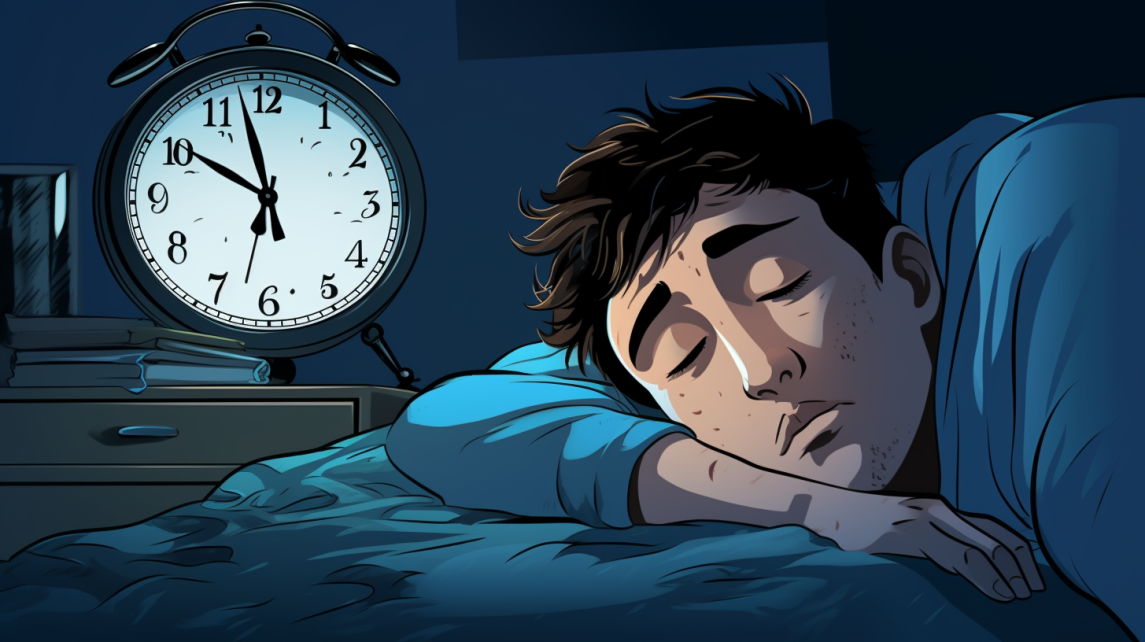A new study published in BMC Psychiatry has found that short sleep duration is associated with increased risk of suicidal ideation and behavior among American adolescents.
Findings indicate that suicide rates have been rising across all racial groups since 2007, and short sleep (<8 hours per night) predicts higher odds of suicide attempts, plans, and ideation compared to adolescents sleeping 8 or more hours.
However, the relationship between sleep and suicide risk varies by race, with a slightly weaker association found for Black and Hispanic youth.
Key Facts:
- Suicide rates increased 57.4% among U.S. adolescents from 2007-2019, across all racial groups
- Those sleeping <8 hours had 1.92 times higher odds of suicidal ideation compared to those with ≥8 hours sleep
- Sleep duration predicted suicide attempts, plans, and ideation for adolescents of all races
- But the relationship was weaker for Black and Hispanic adolescents compared to White and “all other races”
- More research needed on predictors of suicide among minority adolescents
Source: BMC Psychiatry 2023
The Impact of Short Sleep on Adolescent Suicide Risk
Suicide rates have been steadily climbing among American adolescents over the past decade, across all racial and ethnic groups.
This alarming trend highlights an urgent need to understand risk factors contributing to suicidal ideation and behaviors.
Sleep disturbances have long been identified as a risk factor for poor mental health and suicidality.
However, less research has examined whether duration of sleep predicts suicidal outcomes among U.S. teenagers.
This new study aimed to assess the relationship between sleep duration and suicide risk among a large, nationally representative sample of 103,525 American high school students.
Data was analyzed from the CDC’s Youth Risk Behavior Surveillance System (YRBSS) between 2007-2019.
The YRBSS includes surveys conducted biannually among 9th-12th graders.
Students self-report health risk behaviors, including inadequate sleep and suicidal thoughts or attempts.
Researchers focused specifically on the influence of sleep duration on suicidal ideation and behaviors.
Sleep duration was categorized as short (<8 hours) or long (≥8 hours), based on recommendations that teens get 8-10 hours of nightly sleep.
Outcomes included suicide attempts, plans, ideation, and injury from attempt.
Models adjusted for demographics, sexual identity, substance use, trauma, and bullying victimization.
Interactions between sleep and race were also assessed, to test if sleep had varying effects across racial groups.
Short Sleep Duration Universally Impacts Suicide Risk

Results indicated that inadequate sleep strongly predicts suicidal ideation and behaviors for adolescents across all racial backgrounds.
Teens sleeping less than 8 hours had around twice the odds of suicidal ideation compared to those getting 8 or more hours of sleep.
Short sleep duration similarly doubled the odds of suicide attempts, plans, and injurious attempts.
This demonstrates that curtailed sleep is a significant risk factor for suicidal thoughts and actions among U.S. youth, regardless of race.
However, sleep duration did interact with race to influence suicide risk.
Short sleep predicted suicidal ideation and attempts most strongly for White students, followed by “all other races.”
The relationship was slightly attenuated for Black and Hispanic adolescents.
For example, Black teens with short sleep had 1.5 times higher odds of making a suicide plan compared to Black teens with long sleep.
But short sleep Hispanic students had 1.74 times and short sleep White students had 1.9 times the odds of planning suicide compared to counterparts with adequate sleep.
So while inadequate sleep heightened suicide risk across all groups, the association was marginally lower for minority adolescents.
More research is needed to clarify reasons for this discrepancy.
Rising Suicide Rates Among All Racial Groups
Analyses first examined trends in suicide prevalence over the study period from 2007-2019.
Results showed alarming rises in suicide ideation and attempts across all racial groups during this timeframe.
Overall suicide attempts increased by 57.4% among American adolescents from 2007-2019.
Suicide ideation also climbed across the board, remaining highest among “all other races.”
Among Black youth specifically, suicide attempts spiked steeply between 2015-2019.
But suicide ideation held steady as the most prevalent among “all other races” throughout the study timeframe.
These findings underscore a mental health crisis among U.S. adolescents over the past decade or more.
Teen suicide rates have been rising persistently across all racial and ethnic backgrounds.
Understanding both universal and race-specific risk factors is crucial for targeting prevention efforts during this vulnerable developmental window.
Culturally Competent Suicide Screening
An important implication from this study is that inadequate sleep strongly predicts suicidal ideation and behaviors among adolescents of all races and ethnicities.
However, the relationship may be slightly weaker for minority youth.
One potential explanation is underreporting of mental health conditions and suicidality among Black and Hispanic populations.
Minority adolescents who experience suicidal thoughts may be misclassified as non-suicidal without accurate screening tools.
Very few evidence-based tools exist to adequately assess suicide risk among minority youth.
Without accurately capturing suicidal ideation in these groups, prevention efforts will fall short.
More research is urgently needed to develop valid screening tools for diverse adolescents.
Clinical interventions must also be tailored and effective for minority teens at risk for suicide.
Culturally competent suicide screening and treatment is a crucial public health goal as rates continue to climb across all racial groups.
Social Determinants and Structural Factors Impact Minority Mental Health
Another key takeaway is that additional predictors likely contribute to rising suicidality among minority adolescents.
While sleep is important, other systemic factors also drive these trends.
For example, prior studies show that daily discrimination and neighborhood safety impact sleep quality among Black and Hispanic youth.
Community violence and adversity are linked with poor sleep health.
Structural inequities also reduce mental healthcare access for people of color.
Due to stigma, lack of trust, and inequality in care, minority teens are less likely to seek or receive treatment.
Clinical interventions tend to target individual behaviors without addressing macro-level determinants.
Broad public health approaches are needed to confront systemic barriers underpinning mental health disparities.
A public health framework also considers how racism and social marginalization lead to adverse health outcomes over the life course.
Mental and behavioral health are shaped by social experiences that often differ along racial lines.
To holistically prevent worsening youth suicide trends, improving sleep health is one piece alongside tackling systemic disparities and adversity.
How Sleep Affects Teenage Brain Development and Mental Health
During adolescence the brain is undergoing rapid developmental changes.
Synaptic pruning refines connections between brain regions, while myelination speeds communication between neurons.
The prefrontal cortex matures last, controlling planning, judgment, impulse inhibition, and other executive functions. These regions are still structurally malleable during the teenage years.
Sleep is essential for proper brain development during this critical window. It clears metabolic waste, promotes plasticity, and consolidates learning.
Without adequate sleep, teenage brains are deprived of crucial maintenance.
In particular, mood regulation involves numerous structures including the limbic system and prefrontal cortex.
These areas are vulnerable when teens lack sufficient sleep.
Biologically, mental health disorders from depression to PTSD are associated with abnormal limbic system functioning.
Sleep disruption exacerbates problems like emotional dysregulation, irritability, and poor concentration.
Cognitively, tired brains have more difficulty with tasks requiring sustained focus and good judgment.
Impulsivity and risk-taking increase with sleep deprivation.
So adolescents chronically short on sleep are neurobiologically primed for poor mental health outcomes including suicidal thoughts and behaviors.
At the biological level, curtailed sleep disturbs brain systems implicated in mood and cognition.
Promoting Healthy Sleep Among Adolescents
These findings demonstrate how insufficient sleep escalates suicide risk during the teenage years.
How can this knowledge be applied to promote healthy slumber and mental wellbeing?
- Prioritize sleep – Parents and teens need education on the importance of sleep for development, learning, and mood regulation. Sleep deserves equal weight to diet and exercise.
- Set sleep schedules – Having consistent bedtimes and rise times regulates the circadian rhythm for optimal sleep. Teens should aim for 8-10 hours nightly.
- Limit evening screens – Light from phones, tablets, and computers disrupts melatonin and delays sleep onset. Avoid screens 1-2 hours before bed.
- Ensure dark, quiet sleep environment – Use blackout curtains or sleep masks to block light. Ear plugs or white noise machines can dampen disruptive sounds.
- Discuss sleep openly – Parents should regularly talk to teens about sleep habits without judgment. Check-in on sleep challenges and work collaboratively to improve.
- Teach relaxation techniques – Mindfulness, meditation, guided imagery, progressive muscle relaxation, and deep breathing can aid sleep.
- Evaluate medication/substance use – Stimulants, certain antidepressants, and other drugs can disrupt sleep, as can excessive caffeine, alcohol, or marijuana use.
- Check for sleep disorders – Sleep apnea, restless legs syndrome, insomnia, and other disorders cause sleep loss. Diagnosis and treatment is key.
- Consider therapy – Cognitive behavioral therapy for insomnia (CBT-I) helps change thoughts, feelings, and behaviors around sleep.
Along with sufficient sleep duration, improving sleep quality is also beneficial.
Optimizing the sleep environment, sleep-wake timing, thought patterns around sleep, and underlying medical issues all enable healthy, restorative slumber.
- References
- Study: Sleep deprivation and suicide risk among minoritized US adolescents
- Authors: Victoria A. Joseph et al. (2023)







